In This Issue
Message From the
Executive Director
 Now Visit VSI Now Visit VSI
on Facebook
 And Twitter And Twitter
Support VSI Today
Spotlight on Research!
2015 - Save the Dates!
- 2015 Conference
- 2015 Camp Discovery
What's On Your Mind?
- Should I use Protopic at the
same time as my light treatment?
Medical News Updates
- Photocil Update
- Protopic as a Maintenance Therapy
- Simvastatin News
Research & Clinical Trials
Bibliography & Sources
New! Support VSI With eBay
Earn funding for VSI
When you Shop!
View Past Newsletters
VSI Medical and Scientific
Advisory Committee
- Pearl E. Grimes, M.D., Committee Chair
- Ted A. Grossbart, Ph.D.
- Sancy A. Leachman, M.D.
- I. Caroline Le Poole Ph.D.
- Mauro Picardo, M.D.
- Nanette B. Silverberg, M.D.
- Richard A. Spritz, M.D.
- Alain Taieb, M.D., Ph.D.
- Wiete Westerhof, MD, Ph.D.
|
| |
| |
How to Log In:
Have you have forgotten your Login ID and/or Password?
No Problem!
Just go to the
Community Page
Scroll down to
the login box.
LOOK UNDERNEATH!
You'll see instructions to have them sent to the email address on your account. |
|
How to Log In:
Have you have forgotten your Login ID and/or Password?
No Problem!
Just go to the
Community Page
Scroll down to
the login box.
LOOK UNDERNEATH!
You'll see instructions to have them sent to the email address on your account.
|
|
How to Log In:
Have you have forgotten your Login ID and/or Password?
No Problem!
Just go to the
Community Page
Scroll down to
the login box.
LOOK UNDERNEATH!
You'll see instructions to have them sent to the email address on your account.
|
|
How to Log In:
Have you have forgotten your Login ID and/or Password?
No Problem!
Just go to the
Community Page
Scroll down to
the login box.
LOOK UNDERNEATH!
You'll see instructions to have them sent to the email address on your account.
|
|
How to Log In:
Have you have forgotten your Login ID and/or Password?
No Problem!
Just go to the
Community Page
Scroll down to
the login box.
LOOK UNDERNEATH!
You'll see instructions to have them sent to the email address on your account.
|
|
| |
| Contact Us
Online
VitiligoSupport.org
Email Contact Us
Postal Mail Address
Vitiligo Support International
P.O. Box 3565
Lynchburg Va 24503
Phone
(434) 326-5380 |
|
|
Message From the Executive Director

 Dear Members and Friends of VSI, Dear Members and Friends of VSI,
Vitiligo affects about 1% of the world population or about 50 million people! As one of the most prevalent autoimmune diseases, there is NO reason that we cannot and should not become at least as visible and accomplished as larger non-profits such as those representing cancer, heart disease, and psoriasis. Vitiligo has been in the shadows for far too long. With your help, we are prepared to change that.
Over the past year, VSI has led a wide range of initiatives to increase education, awareness and support. We have fought to change the way vitiligo is addressed by the insurance industry and ensure that patients have access to care from needed specialists. Our collaborative efforts have secured greater federal funding of research. Our accomplishments are significant when you consider that we operate with just one full-time staff person. Just imagine what we could do with increased financial support!
VSI currently supports research through recruitment efforts, but what if we could also offer research grants to encourage more researchers to focus on vitiligo? What if VSI could sponsor a major awareness campaign to garner greater public understanding, and increased interest in vitiligo in the medical and scientific community? What if VSI could educate all doctors and insurance personnel so that we never again had to hear the term “cosmetic condition?” What if all physicians, friends and loved ones really understood the challenges faced every day by living with the burden of vitiligo?
A top team of advisors is helping VSI define a clear vision for the organization and forge a strategic plan to ensure a better future for VSI and all of our stakeholders. We are ready to radically change the future – OUR future – but we cannot do this without the meaningful, financial support of our members.
Sincerely,

Jackie Gardner
Executive Director
Please Join VSI's Effort Today
Together We Will Move Vitiligo out of the Shadows
Become a Supporting Member: Click Here
Make a General Donation Through VSI: Click Here
Make a General Donation with PayPal.

|

|
This organization is a Silver-level GuideStar Exchange
participant, demonstrating its commitment to transparency. |

Mark Your Calendars Now – Save The Date!
2015 Vitiligo Conference!
9/26/15 – 9/27/15
Orange California
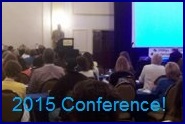
Details will be announced in future newsletters,
on VSI's website, and via VSI's social media channels.
To Receive Announcements and
Advance Meeting Information:
Click Here
Camp Discovery 2015!
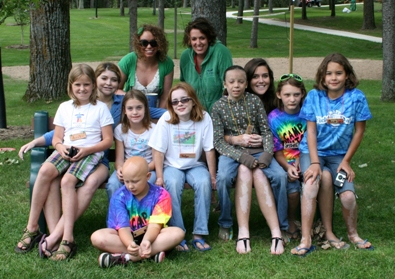
The American Academy of Dermatology’s (AAD) Camp Discovery program is for
children ages 8-16 who have a chronic skin disease.
Under the expert care of dermatologists and nurses, Camp Discovery gives campers the opportunity to spend a week with other young people with skin conditions having fun and participating in activities such as swimming, horseback riding, arts and crafts and many more.
There is no fee to attend, all costs, including transportation, are provided by the AAD through generous donations from its members, outside organizations and individuals. All campers must be initially referred by their dermatologist.
This year the Academy is proud to offer six camping sessions:
- June 21 – 26, Camp Little Pine in Crosslake, Minnesota (ages 10 – 14)
- June 22 – 26, Camp Reflection in Carnation, Washington (ages 9 – 16)
- July 5 – 10, Camp Big Trout in Crosslake, Minnesota (ages 14 – 16)
- August 9 – 14, Camp Dermadillo, Burton, Texas (ages 9 – 15)
- August 9 – 14, Camp Horizon, Millville, Pennsylvania (ages 8 – 13)
- August 9 - 15, Camp Liberty, Andover Connecticut (ages 8-16)
For more information about attending, volunteering or donating,
please visit www.campdiscovery.org or
contact Janine Mueller at [email protected].
To read a first-hand report from a VSI member
who attended Camp Discovery: Click here |
Back to Top

Spotlight on Research
The U.S. National Institutes of Health (NIH), provides the single largest source of funding for research grants in the world. Composed of various institutes, the vast majority of funding for vitiligo comes through the National Institute of Arthritis and Musculoskeletal and Skin Diseases (NIAMS), with additional current funding from the National Institute of Allergy and Infectious Diseases (NIAID) and the National Cancer Institute (NCI). Currently, the NIH is funding 34 grant projects for vitiligo headed by 25 investigators from across the U.S.
NIH Funding for Genetics in Vitiligo: Richard Spritz, University of Colorado
  As most of our readers know, Dr Richard Spritz, a member of VSI’s Medical and Scientific Advisory Committee, remains quite active in vitiligo research. Dr. Spritz and his International VitGene Consortium currently have three NIH grants focusing on the genetic basis for developing vitiligo. The first grant, “Vitiligo,” started 17 years ago in 1998, and provided the first, basic steps for identifying candidate genes linked to vitiligo; it has now been followed by the establishment of genomewide association studies (GWAS) to identify specific genes involved in vitiligo. Dr. Spritz states: “Our genetic studies, carried out under a parallel project, have begun to elucidate the genetic architecture underlying GV [generalized vitiligo], providing the beginning of a "parts list" for the disorder. This project will analyze the specific functions of several of those genes, the corresponding proteins, and even specific genetic variants of those genes. This project thus represents a new era in GV biology, with functional studies targeting hypotheses based on robust genetic analyses of underlying pathobiology. The proposed studies will provide key information that may culminate in the development of new treatments specifically directed against these proteins and pathobiological pathways.” As most of our readers know, Dr Richard Spritz, a member of VSI’s Medical and Scientific Advisory Committee, remains quite active in vitiligo research. Dr. Spritz and his International VitGene Consortium currently have three NIH grants focusing on the genetic basis for developing vitiligo. The first grant, “Vitiligo,” started 17 years ago in 1998, and provided the first, basic steps for identifying candidate genes linked to vitiligo; it has now been followed by the establishment of genomewide association studies (GWAS) to identify specific genes involved in vitiligo. Dr. Spritz states: “Our genetic studies, carried out under a parallel project, have begun to elucidate the genetic architecture underlying GV [generalized vitiligo], providing the beginning of a "parts list" for the disorder. This project will analyze the specific functions of several of those genes, the corresponding proteins, and even specific genetic variants of those genes. This project thus represents a new era in GV biology, with functional studies targeting hypotheses based on robust genetic analyses of underlying pathobiology. The proposed studies will provide key information that may culminate in the development of new treatments specifically directed against these proteins and pathobiological pathways.”
Investigators often apply for grants to continue promising research and fund parallel studies to take advantage of the data they are gathering by pursuing leads discovered in an initial grant. Dr. Spritz’s additional grants -- “Genetic Studies of Vitiligo” and “Identification and Functional Analyses of Common and Rare Causal Variants in SLA” are doing just that – building on previous studies and further exploring the discoveries his team has made.
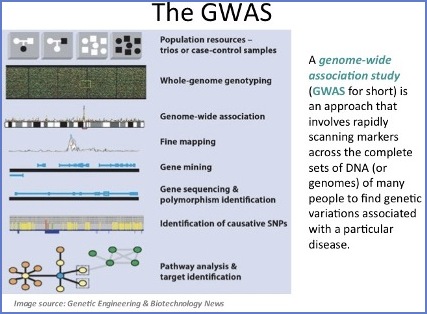
The VitGene Consortium’s three GWAS studies so far have identified about 32 susceptibility genes for vitiligo, almost doubling the previous number of known genes and leading to the biological pathways involved in the loss of pigment. According to Dr. Spritz, “It is clear that this has been a terrific success, with a large number of additional genes, fitting together into pathways, and highlighting potential avenues that might be targeted for treatment.” Once they have completed their initial analysis, the next step is to perform additional studies to attempt to replicate the results. If the same genes and pathways continue to be identified in the replication, researchers can be more confident that these are indeed important to the development of vitiligo and begin to target them with potential treatments.
Some of the genes identified are also found in other autoimmune diseases, showing the interrelation between these diseases and explaining the high incidence of patients having more than one autoimmune disease. Other genes are specific to vitiligo. Understanding these genes, how they function, and how their actions lead to the targeting of melanocytes in vitiligo can provide pathways for future treatments. Several dozen publications already have come out of these studies. It’s important to remember that research cannot be carried out without the patient volunteers.
Your participation in these studies can positively impact the future of vitiligo, so please check the Clinical Trials section in this newsletter for opportunities to participate.
NIAMS Funding Study
We found an article published this summer by Karimkhani, et al about their study focusing on NIAMS grant funding for skin diseases and burden of disease very interesting, and wanted to share its results. During FY2013, NIAMS funded $424 million in grants, of which 17.7%, or $73.3 million, was awarded for projects on skin diseases, including 2.4%, or $1.74 million, for vitiligo.
The study then compared dollar amounts awarded for a specific disease with the burden of that disease as determined by the 2010 Global Burden of Disease rankings. The study concluded that psoriasis, leprosy, and “other skin and subcutaneous disease” (that included vitiligo) received more funding compared to skin diseases that rated much higher on the disability scale. The article also points out that vitiligo received the second largest amount of all diseases included in this latter category.
VSI Commentary on NIAMS Funding Study:
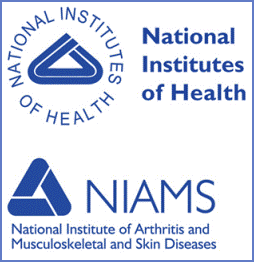 
The objective of the study was stated as the following: “To determine the extent to which grants issued by the National Institute of Arthritis and Musculoskeletal and Skin Diseases (NIAMS) reflect disease burden, measured by disability-adjusted life years (DALYs) from the Global Burden of Disease (GBD) 2010 project.” While the study doesn’t state that NIAMS funding should correlate with burden of disease, the fact that the connection between the two was the focus of the study certainly raises the issue.
Interestingly, while the study mentions prevalence of some diseases, it did not mention the high prevalence of vitiligo and did not include this factor in its analysis. Gauging the number of people who suffer from a disease should be one factor – in addition to disease burden, the best science, and needs of other diseases – and included in discussions about funding priorities.
VSI was somewhat frustrated by the fact that vitiligo, though a highly prevalent skin and autoimmune disease, was lumped in with “other skin and subcutaneous diseases” instead of having its own independent listing. Too often, researchers and other medical professionals choose to focus on closely-related diseases but not specifically on vitiligo. Lumping numerous diseases together and then providing a rating for burden of disease for all of them combined can be misleading. VSI is working hard to change this bias, but it is a tough battle.
Finally, the process of selecting which grants to fund at the NIH is a complex process. It is not solely based on comparative burden of disease, but on numerous factors, including the scientific quality of the grant applications received as well as the applications that come in for a specific grant cycle and the topic areas they reflect. Sometimes, while a disease might rate extremely high on a burden of disease scale, few if any applications are received, or those that are received might not be of superior scientific quality compared to other applications.

Back to Top

What's On Your Mind?
Q. My doctor prescribed Protopic and NB-UVB for me. Should I have the Protopic on my skin while using the light treatment?
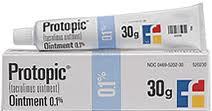 While having Protopic on your skin during a light treatment may or may not reduce the therapeutic effect, it will not help. While having Protopic on your skin during a light treatment may or may not reduce the therapeutic effect, it will not help.
Some topicals need to be on the skin when using light
because they are "light-sensitizing." This is the case for example, with PUVA treatment. PUVA stands for Psoralen + UVA (light).
A psoralen is a light-sensitizing drug and needs to be either taken orally, or applied to the skin (topically), just prior to exposure to the light treatment or exposure in order to make the skin more sensitive and responsive to the light.
Although Protopic does make the skin more sensitive in some individuals, it is not classified as a light-sensitizing drug. Vitiligo is an autoimmune disease where the body mistakenly identifies its own melanocytes (pigment-making cells) as a foreign substance and attacks and kills them. When (and where) Protopic is applied to the skin, as an immunomodulating drug, its function is to block (turn off) the immune response, allowing the melanocytes to again flourish.
Protopic's ability to block the immune response is a somewhat cumulative process. It's not immediate like a psoralen, and it does not need light in order to work. If applied daily, after a period of several weeks or even months, the melanocytes once again begin to repopulate the previously depigmented area.
By adding light to this or any therapy, you are increasing melanocyte stimulation. NB-UVB stimulates melanocytes whether or not Protopic is being used. Protopic suppresses the immune response where applied whether or not light is used. One is not dependent on the other.

Medical News Updates
Highlights of recently-published medical
articles on vitiligo and its treatments
Results from three promising new studies have been e-published in February and December, 2014.
Two of these, Photocil and simvastatin, refer to potential treatments discussed in VSI’s 2013 Summer Newsletter article on vitiligo treatments in the pipeline.
Photocil Update
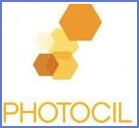  Photocil was the topic of a recent publication by Goren, et al. The results of using natural sunlight at the Dead Sea, which numerous studies have shown to be as effective as broadband and narrowband UVB, have never been able to be duplicated elsewhere, either at or above sea level, because typically, the skin burns (develops erythema) before the skin can absorb a therapeutic amount of light. Photocil was the topic of a recent publication by Goren, et al. The results of using natural sunlight at the Dead Sea, which numerous studies have shown to be as effective as broadband and narrowband UVB, have never been able to be duplicated elsewhere, either at or above sea level, because typically, the skin burns (develops erythema) before the skin can absorb a therapeutic amount of light.
Goren’s group conducted a pilot study at sea level to determine whether Photocil, which filters out the nontherapeutic wavelengths from natural sunlight, would be effective for acrofacial vitiligo.
After an average of 11 weeks of treatment, all patients in the treatment group of the pilot study had at least 30-40% repigmentation from the use of Photocil, with 56% achieving better than 50% repigmentation: 28% had 70% repigmentation, 28% had 50%, and 44% had 30-40%. The placebo group didn’t fare nearly as well, with only 10% of them achieving even 20% repigmentation. The study results, while needing replication in other studies, were strongly indicative that Photocil can provide an alternative to light therapy from artificial sources that is safe and effective.
As VSI noted in the Pipeline article, in addition to the treatment success demonstrated in this study, Photocil could prove to be a better option for the many vitiligo patients who are not able to access phototherapy in clinics due to its cost, lack of availability, and/or inability to comply with the treatment protocol, and also may not have access to home phototherapy because of cost or inability to obtain a prescription to purchase a unit.
Also noted, Photocil may prove to be an important adjunct to traditional phototherapy delivered in a clinic. Some loss of pigment occurs in many patients within 1-2 years after successful treatment. Daily Photocil use might prevent or minimize the pigment loss. A future study will be needed to evaluate the use of Photocil as a maintenance therapy.
Recruitment is still underway for this study. Please see the Research and Clinical Trials listing in this newsletter to see if you qualify to participate. Without volunteers, these studies can’t continue, losing valuable opportunities to benefit those with vitiligo.
Protopic as a Maintenance Therapy
  Keeping pigment once regained is an ongoing battle with vitiligo patients, with the risk of relapse estimated to be around 40% in the first year. In atopic dermatitis, studies have shown that the continuous low-level use of calcineurin inhibitors like Protopic, along with topical corticosteroids, on previously-treated skin can prevent new flares from occurring. Keeping pigment once regained is an ongoing battle with vitiligo patients, with the risk of relapse estimated to be around 40% in the first year. In atopic dermatitis, studies have shown that the continuous low-level use of calcineurin inhibitors like Protopic, along with topical corticosteroids, on previously-treated skin can prevent new flares from occurring.
A French team including Dr. Ezzedine, whose research we have featured many times in these newsletters, recently examined whether the twice-weekly use of Protopic (tacrolimus) might help maintain pigment regained through treatment in vitiligo patients.
Thirty-five patients with a total of 72 vitiligo patches were randomized into two groups: 16 patients with 31 patches to the placebo group, and 19 patients with 41 patches to the Protopic group. When the team looked at all the patients assigned to each group, whether or not they completed the study in this group (intention to treat analysis), they found that 48.4% of patient lesions showed depigmentation within the placebo group, while only 26.8% of lesions did in the Protopic group, though when they adjusted for within-patient clustering, the results did not remain statistically significant. Per protocol analysis, looking only at the patients who completed the study using the assigned treatment, demonstrated similar results, with 40% of lesions in the placebo group showing some degree of depigmentation, and only 9.7% within the Protopic group. This analysis remained statistically significant even after the within-patient clusters were adjusted.
The team concluded that twice-weekly application of Protopic to previously repigmented vitiligo lesions was effective in maintaining the pigment gained.
Simvastatin News
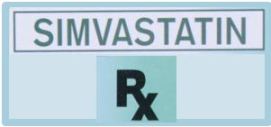  VSI has included recruitment announcements for a simvastatin clinical trial in several newsletters, but thus far has not received any study results. That trial is no longer recruiting, but the results reported here from another study seem promising. VSI has included recruitment announcements for a simvastatin clinical trial in several newsletters, but thus far has not received any study results. That trial is no longer recruiting, but the results reported here from another study seem promising.
Agarwal, et al, realizing that current treatments for vitiligo are time-consuming, expensive, and with low efficacy, looked into repurposed medications (medications used for other than the originally-approved purpose; Protopic in vitiligo is repurposed from eczema, for example) because since they have already been approved for use, safety data is available and regulatory approval for the new use can be expedited.
Having previously reported that the IFN-γ-induced chemokine CXCL10 is expressed in areas with vitiligo, and that it is vital for progression and maintenance of depigmentation in their mouse model of vitiligo, they hypothesized that targeting IFN-y signaling might be an effective treatment. Activating STAT1 is necessary for IFN-Y signaling, and per recent studies, simvastatin, an FDA-approved medication for lowering cholesterol, inhibited STAT1 activation in vitro. Simvastatin, then, seemed like a good target for their study.
They found that simvastatin not only prevented new depigmentation, but it reversed existing areas of vitiligo in their mouse model, and also reduced the number of infiltrating autoreactive CD8+ T cells in the skin. In vivo results of treating melanocyte-specific, CD8+ T cells decreased IFN-y production and proliferation, suggesting that simvastatin might work directly on T cells.
Their findings suggest that simvastatin might be a safe, effective, targeted new treatment for vitiligo.
Back to Top

Research & Clinical Trials
New Needling Clinical Trial in New Jersey
Assessing the Efficacy of Needling
With or Without Corticosteroids in the Repigmentation of Vitiligo
Principal Investigator:
Babar Rao MD

Study Location:
Rutgers - Robert Wood Johnson Medical School
1 World’s Fair Dr, Somerset, NJ
Needling is an office-based procedure that transposes healthy, pigmented skin cells to depigmented areas using a needle. This trial will investigate the use of needling to treat vitiligo. It will compare needling alone to needling with corticosteroid.
Eligibility Requirements:
- Ages: 18 – 89 years
- Patients with 3 or more localized patches of stable vitiligo
- No prior treatment or had failed previous vitiligo treatments.
Exclusion Criteria:Those with the following will not be eligible:
- Unstable vitiligo (no new or changing lesions in past 6 months)
- Allergic to triamcinolone
- Using systemic treatments
- Pregnant
If you are interested in participating or would like more information:
Contact: Aida – 732-235-7765 or Danielle - [email protected] |
Photocil (Topical) for the Treatment of Vitiligo
Principal Investigator: Sharon Keene, MD;
Study Location: Physicians Institute, Tucson, Arizona
Photocil is a topical cream that works with natural sunlight instead of using traditional phototherapy equipment. It allows only those wavelengths of Ultraviolet B (UVB) light that are most beneficial for vitiligo patients through while protecting users from non-therapeutic radiation.
Study Goal: The study aims to assess the safety and effectiveness of Photocil in the treatment of vitiligo.
Eligibility Requirements:
- Must be 18 – 65 years of age
- Diagnosed with vitiligo and diagnosis must be confirmed by a dermatologist
- Must have vitiligo lesions affecting a minimum 5% of the facial, leg or arm surface areas
Exclusion Criteria – Patients who:
- Did not respond to prior phototherapy treatment
- Completed phototherapy for same lesion(s) in last 6 months
- Has previous history of skin cancer
- Has previous history of photosensitivity
- Has a history of herpes (HSV I or II) outbreaks
- Has previous history of autoimmune disease may be excluded at investigator's discretion
- Is currently taking of immunosuppressive or photosensitizing drugs
- Plan to use antibiotics, anti-fungal, calcineurin inhibitors or other drugs that may cause photosensitivity during the study period. These patients may be excluded at investigator's discretion.
- Is pregnant or lactating
Explanation:
NB-UVB light therapy is commonly used to treat vitiligo, but access to treatment and compliance can be drawbacks. Light therapy can involve trips to a physician’s office, and insurance reimbursement sometimes can prove difficult (see lead article on insurance). A randomized placebo-controlled trial, this pilot study will use the Vitiligo Area Severity Index (VASI) to measure the outcome. If positive results are obtained, a larger study will take place. The study sponsor is Applied Biology, Inc.
For more information - or to sign up: Call: 520-290-5555 |
Clinuvel Scenesse Clinical Trial
Opportunity in Singapore!
SCENESSE® Phase ll Clinical Trial
Study Location: National Skin Center, Singapore
The National Skin Centre is currently conducting research to assess a new
investigational study drug, afamelanotide (SCENESSE®) - a pigmentation
agent which may help to accelerate the repigmentation of the skin when used
together with the currently available therapy of Narrowband Ultraviolet B (NB-UVB) treatment. SCENESSE® is given in the form of an implant that slowly dissolves
in the body after administration under the skin.
Clinuvel Singapore Pte Ltd is seeking committed vitiligo patients
to participate in a 10-month trial at the National Skin Centre.
To participate in this clinical study,
individuals must meet the following criteria:
- at least 21 years of age
- nonsegmental vitiligo including the head and neck
- skin of mid to dark complexion
- no previous surgical treatment for vitiligo
- no light treatment (including NB-UVB phototherapy)
in the past 6 weeks
- no topical treatments (creams) for vitiligo in the past 4 weeks
- able to attend 10 study visits (around 2-3 hours) for 10 months
and come for NB-UVB twice a week for the first 7 months.
All study visits and NB-UVB treatments will
take place at the National Skin Centre.
Participants will be compensated for travel expenses. Study related
procedures and treatments part of the research will be given at no cost.
Your information will be kept confidential.
If you are interested in participating or would like more information:
Contact: Eric Wang Jun Yen
Phone: +65 90111867 or Email: [email protected] |
Melanocyte-Keratinocyte Transplant Procedure
Opportunity in Detroit!
Comparative Study Using Dermabrasion versus CO2 Laser
and Collagen Dressing versus Vaseline Gauze in MKTP
Principle Investigator: Iltefat Hamzavi, MD
Study Location:
Henry Ford Department of Dermatology,
3031 West Grand Boulevard Detroit, MI 48202
The melanocyte keratinocyte transplant procedure (MKTP) involves transplantation
of the skin cells that produce pigment from your normal skin to the depigmented skin. The procedure takes approximately 4 hours and is done under local anesthesia.
This is a prospective, open-label, parallel study comparing two different techniques
for preparing the depigmented skin (carbon dioxide laser versus dermabrasion)
and comparing two different wound dressings (collagen dressing versus vaseline impregnated gauze) for the melanocyte keratinocyte transplant procedure.
Eligibility Requirements:
- Must be 18 years of age or older
- Must have depigmented patches of skin
Exclusion Criteria:
- History of acral vitiligo (vitiligo on the hands or feet)
- Unstable vitiligo, defined as any new or enlarging areas of
depigmentation within the last 6 months)
- History of thickened scars or keloids
- History of koebnerization (getting new areas of
depigmentation at sites of trauma, such as a cut, scrape, or burn)
The vitiligo patch will be divided into four quadrants. Each quadrant will be
treated with the melanocyte keratinocyte transplant procedure, as follows:
- CO2 laser for denuding the epithelium Collagen dressing
- CO2 laser for denuding the epithelium Vaseline impregnated gauze dressing
- Dermabrasion for denuding the epithelium Collagen Dressing
- Dermabrasion for denuding the epithelium Vaseline impregnated gauze dressing
The patient will return to the clinic for the dressing removal 1 week post-procedure. Repigmentation of the treated areas will be assessed at 1 month, 3 months, and 6 months post-MKTP.
To participate, or for more information,
Contact: Dr. James L. Griffith
Phone: 313-916-6964 or Email: [email protected] |
Your Opportunity to Move Research Forward!
University of Colorado
Health School of Medicine
International Study to Find Vitiligo Genes

Update!
Additional Patient Volunteers Needed
From the
USA and Canada
Scientists with the International VitGene Consortium project spanning 18 countries are working to understand the biology of vitiligo so that more effective vitiligo treatments can be designed.
Thanks to your involvement, the first two phases of this research project have been extraordinarily successful, discovering many vitiligo genes, and resulting in real breakthroughs in understanding and opening doors to potential new treatments.
The research team is now working to replicate their results in order to confirm the genes and processes involved. To accomplish this, they need to enroll 250 additional Caucasian (white) vitiligo patients plus controls by the end of January. Participants must be from the USA or Canada and not have previously taken part. If you completed the questionnaire previously, never returned the sample kit, and have been sent a new kit, please return it as soon as possible.
Your participation is vitally needed. Please complete the questionnaire below and then email directly to Dr. Richard Spritz at the University of Colorado School of Medicine using the email address provided at the end of the questionnaire.
Your personal information, by law,
will be kept private and will not be sold or disclosed.
Join with us to work for a vitiligo-free future!
|

NEW! - Support VSI Through Ebay
New Way To Support VSI Through Ebay!
Do you sell items on eBay, or want to hold an online garage sale? If so, consider donating a percentage of your proceeds to VSI through eBay’s Giving Works program! It’s easy – when you list an item through a Giving Works listing, choose to send 10-100% of the final sale price to VSI. Your listing will have a special placement and designation. You’ll receive a proportional fee credit from eBay, and will also receive a tax donation receipt when the donation is deducted from your funds received. It’s a great opportunity to make some money for yourself and for VSI, so clean out those closets and garages and get selling!
To Learn More About VSI's Giving Works: Click here |
Earn Funding for VSI 3 Ways When You Shop!
Please keep VSI in mind when you do any of your online shopping
AMAZON SHOPPING
With thousands of items in addition to books, Amazon.com is a one stop-shopping center! Simply shop through the above link (bookmark it for easy reference), or from the Amazon box on our Community Home Page, and VSI will earn fees, based on a percentage of the sale. The more items purchased by members, the higher the percentage! Our Vitiligo Library and Store, containing books, articles and products for those with vitiligo, is also powered by Amazon.
iGIVE SHOPPING
iGive.com offers access to free shipping deals and exclusive coupons, on top of the great deals you'll find every day through its network of 1,000+ stores, including Pottery Barn, REI, Staples, Petco, Expedia, Best Buy, QVC and many more. Best of all, up to 26% of your purchase at each store is donated to VSI at no cost to you! Let friends and family know so they can support VSI, too. Click register for iGive to get started today, and download the iGive button to automatically benefit VSI whenever you go to an included store. You can also raise a penny per search through iGive’s search engine, isearchigive.com.
GOODSEARCH SHOPPING AND DINING!
GoodSearch and Goodshop, like iGive, offers coupons, discounts, and donations to VSI through its network of over 5,000 stores. Just click the link above to get the savings started and the donations flowing!
* Vitiligo Support International Inc. (VSI) is a participant in the Amazon Services LLC Associates Program, an affiliate advertising program designed to provide a means for sites to earn advertising fees by advertising and linking to Amazon.com. |
|

















